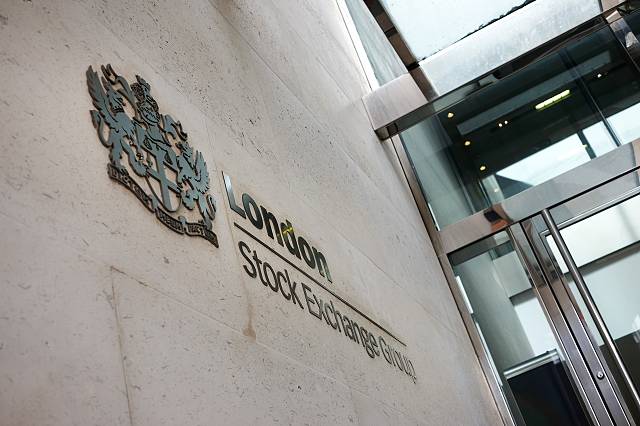
The finding of Giffen behavior is robust to a wide range of alternate specifications, shown in Table 4. Since including the change in household size or either source of income rarely makes more than a marginal difference on our estimates of the price elasticity, for conciseness of presentation we show only the results with these additional control variables included. Columns 1 to 3 present results from a log-log specification, regressing the change in the log of household rice consumption on the change in the log of the net-of-subsidy price of rice and changes in the logs of the other control variables. The results again reveal Giffen behavior for households consuming less than 80 percent of their calories from rice, and downward sloping demand for those above this threshold. The point estimates of the elasticities are much greater here than for the arc percent changes in Table 3.
- Over this range, the consumer still trades off calories against taste, although caloric intake is given much greater importance.
- The conditions under which we would expect Giffen behavior can be demonstrated by elaborating Marshall’s statement.8 Imagine an impoverished consumer near a subsistence level of nutrition, whose diet consists of only two foods, a “basic” or staple good (in Marshall’s case, bread) and a “fancy” good (meat).
- With Giffen goods, the demand curve is upward sloping which shows more demand at higher prices.
- The concept of Giffen goods focuses on a low income, non-luxury products that have very few close substitutes.
Column 8 of Table 3 shows regressions like (1) above, but using the arc percent change in meat consumption as the dependent variable (we focus on the sample of households with less than 80 percent rice calorie share, though the results are robust to other thresholds). We find that the point estimate of the elasticity of meat consumption with respect to the price of rice is negative as predicted, though it is not statistically significant. First, all foods in China are sold in free markets, at market determined prices. A 1993 reform of the grain distribution system largely put an end to price controls, state food stores, or free rations. To the extent the wealth effect of the price change can be smoothed over the lifetime, this will bias us against finding Giffen behavior. Therefore, quality substitution in response to the price subsidy is not a concern for our analysis.
Giffen Good
Anecdotally, such price fluctuations, even fairly large ones, are increasingly common in developing countries.6 And while there is a large literature examining household vulnerability and responses to income shocks, there is comparably little evidence with respect to price shocks. Our analysis, by focusing on the extremely poor and by introducing exogenous price changes for staple foods, is useful for understanding this vulnerability. 5Others have argued that it is not our understanding of consumers that is flawed, but rather our understanding of markets.
- When the demand for a good increases when the consumer’s income increase, and the demand decreases when the income decreases, the good is said to be a normal good.
- These examples are usually related to staple goods, which are items that make up a significant portion of a consumer’s budget.
- The very poor, however, are likely to be liquidity constrained and thus lack this ability.
- Since there are few substitutes for Giffen goods, consumers continue to remain willing to buy a Giffen good when the price rises.
- Our results suggest that in fact households in the subsistence zone are able to buffer their staple consumption against such changes quite well (unless perhaps the price changes are very large).
- The income effect describes the relationship between an increase in real income and demand for a good.
As we have emphasized, however, Giffen behavior is likely to be exhibited only by a specific subset of the poor. Therefore, in columns 3 through 6 we refine the test by parsing the data according to the theory, separating households by whether their preintervention staple calorie share suggests they are likely to be too poor to purchase something other than rice. For the group consuming at least some substantial share (20 percent) of calories from sources other than rice (column 3), i.e., the poor-but-not-too-poor, we find very strong evidence of Giffen behavior. A 1 percent price increase causes a 0.45 percent increase in consumption, and the effect is statistically significant at the 1 percent level (and little changed by adding in the other control variables).
Wheat Flour
Normal goods are those goods where, as your income goes up, you buy more of them. Take eating in restaurants for example, when you were a student, you couldn’t afford to eat in restaurants, but when you started earning money, you ate more frequently in restaurants. 42Our Chinese management team was the residual claimant on the value of unredeemed vouchers, and so they, themselves, had a strong incentive to enforce the rules of the intervention and prevent cashing out.
For example, Shankar Subramanian and Deaton (1996) find that the poorest households in rural Maharashtra, India, on average receive 53 percent of their calories from sorghum (and spend on average 20 percent of their total household budgets on this food). 41If households bought rice at subsidized prices on behalf of (or as a gift to) their friends or relatives but did not make a profit from doing so, this does not affect the households’ wealth and thus does not bias our experiment. We of course cannot rule out that treatment households shared some of their rice with others.
The increase in the coefficients as the threshold moves from 0.85 to 0.70 is consistent with increasingly including some of the least poor of the poor who are in the subsistence rather than the calorie-deprived zone, for whom the response to a price increase is positive. The reliance on these basic foods for nutrition is underscored even more by giffen goods example in india the fact that the average total calorie share from all cereals or grains is 72 percent in Hunan and 77 percent in Gansu. Further, in both provinces, on average 13 percent of calories come from edible oils (mostly vegetable oil), which are primarily used in cooking, and are generally not a substitute for other forms of consumption or nutrition.
A. Hunan
When prices fall, demand is expected to increase creating an upward sloping curve. Income can slightly mitigate these results, flattening curves since more personal income can result in different behaviors. Since there are typically substitutes for most goods, the substitution effect helps strengthen the case for standard supply and demand.

14One concern is that by limiting the potential increase in consumption in response to the price decline, we might skew the average consumption change toward a decline (i.e., Giffen behavior). However, in practice, almost no households even approached the voucher limit, most likely due to their extremely low incomes and a lack of access to credit, so this is unlikely to be a major concern. The original example of a Giffen good was potatoes during the Irish potato famine of the 19th century. During this time, the price of potatoes increased dramatically, and despite the fact that people could not afford to buy other goods, they actually increased their demand for potatoes, which were a staple part of their diet. Giffen goods are rare types of inferior goods that have a paradoxical relationship between price and demand.
TABLE 6
For these households, increasing the value of the benefits will improve nutrition only up to a point, after which some households will be in the subsistence zone and the nutrition improvement will level off, and possibly even decline. This creates a challenge for program targeting, as these nonlinearities suggest programs will be effective only if the size of the subsidy is tailored to the household’s consumption zone. It is also important to note that the difficulties facing subsidies or price controls would apply to almost any other program whose goal is to improve nutrition. In particular, any program that results in an increase in real wealth, whether cash transfers, employment schemes, in-kind transfers, or food stamps, will generate similar substitution effects. Without discounting this last result, we turn now to consider possible explanations for why the evidence of Giffen behavior in Gansu is less immediately evident and precisely estimated than in Hunan.
Thus, splitting the data by the pre-intervention or initial share of caloric intake from consumption of the staple (Initial Staple Calorie Share, or ISCS) provides a more direct measure of whether a consumer or household is well off enough that they could, potentially, exhibit Giffen behavior. Along the x-axis, 100 percent of calories come from the staple, while along the y-axis, the share is zero. In between these extremes, the share of calories from the staple is constant along rays from the origin, with the share decreasing monotonically as the slope of the ray increases.

In other words, the substitution effect created by the increase in the price of that good must be smaller than the income effect created by the increased cost requirement. The total amount spent on the good must be large relative to the consumer’s budget. Only in such a scenario will an increase in its price create a significant income effect.
Overview of Inferior Good
This set of predictions provides important insight into the search for Giffen behavior and may also help explain why such behavior has not been previously detected. First, we should not expect to observe Giffen behavior at the market level; a subset of consumers might exhibit Giffen behavior with respect to a particular commodity while the overall market exhibits downward sloping demand. In addition, the nonlinear response suggests the search is even more nuanced than just focusing on the poorest households.

23Although our intervention caused a price decrease between rounds 1 and 2 and a corresponding increase between rounds 2 and 3, for ease of exposition and interpretation we will typically refer to the effects of a price increase, the more traditional and intuitive way of describing Giffen behavior. Third, in order to ensure that they were used only by treatment households and not resold, the vouchers (which were printed in Beijing in multicolor ink and bore a special stamp, making them difficult to counterfeit in the survey regions) had to be signed by the redeemer at the time they were used. Second, the vouchers were distributed only incrementally (one-fifth each month) over the course of the intervention (though all vouchers remained valid until the end of the intervention).
Giffen Goods
Overall, both the income and substitution effects are at work to create unconventional supply and demand results. Normal goods are those goods whose demand changes along with the change in income of the consumers. On the other hand, normal goods response to negative price effects i.e. rise in price leads to fall in demand and vice versa. Economists have found that when prices rise, demand falls creating a downward sloping curve.
Second, as shown, ISCS is not very need dependent, whereas budget share thresholds will vary considerably by household, due to differing housing, health care, education, and nutritional needs. Further, while some expenditures such as entertainment are highly discretionary, others categories such as housing, health care, and utilities are much less so. Thus, unlike the fairly precise ISCS cutoffs derived, clean cutoffs based on budget shares are difficult to derive, since the amount of truly discretionary income is difficult to measure. For example, households with school-aged children would appear “richer” by the budget share measure because of expenditures on school fees; however, these expenditures are not really discretionary, and in fact make the household less “wealthy” than an identical household not facing these fees. The discussion in Section I highlighted a nuanced prediction of the standard consumer model in light of subsistence concerns. The poorest of the poor should have a negative price elasticity, the poor-but-not-too-poor may have a positive price elasticity, i.e., exhibit Giffen behavior, and the relatively wealthy should once again have a negative price elasticity.
DIFFERENCE SUBSTITUTE AND COMPLEMENTARY GOODS – COUNCIL OF ENGINEERS AND VALUERS
DIFFERENCE SUBSTITUTE AND COMPLEMENTARY GOODS.
Posted: Fri, 14 Oct 2022 07:00:00 GMT [source]
Inferior goods are those goods whose demands decrease with the increase in income of the consumer and demand increases with the decrease in income of the consumer. There is an inverse relationship between income of the customer and demand for inferior goods. Giffen goods are those goods for which the demand will increase with an increase in price and demand decrease with a decrease in price. Giffen goods are a rare kind of inferior good that have no immediate alternatives. These goods are treated as staples in many countries, for example, rice and bread.
For both normal and inferior goods, a price increase will lead to a reduction in quantity consumed of the good due to substitute goods being relatively cheaper.[9] Consumers substitute the good in which the price has increased for either cheaper goods of the same observed quality or increase their consumption of other inferior goods. As the price of rice increases, consumers may have to reduce their consumption of other goods in order to afford the staple grain, and as a result, demand for rice may increase. A Giffen good, a concept commonly used in economics, refers to a good that people consume more as the price rises. Therefore, a Giffen good shows an upward-sloping demand curve and violates the fundamental law of demand. They have the inverse relation with price of one product and demand for its substitute.